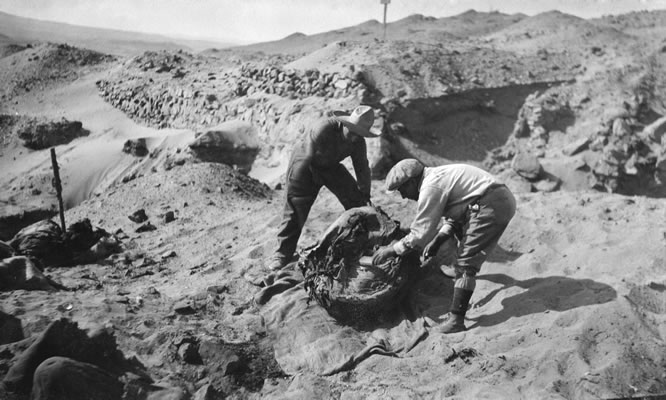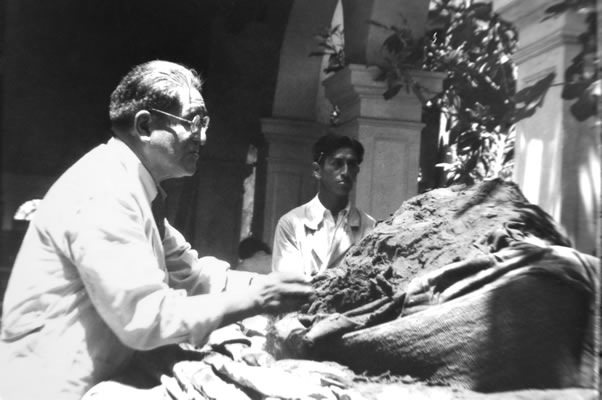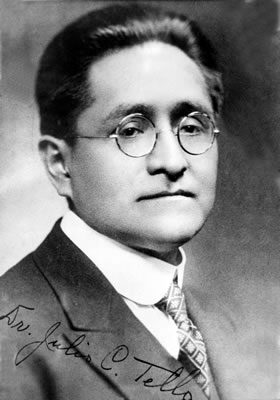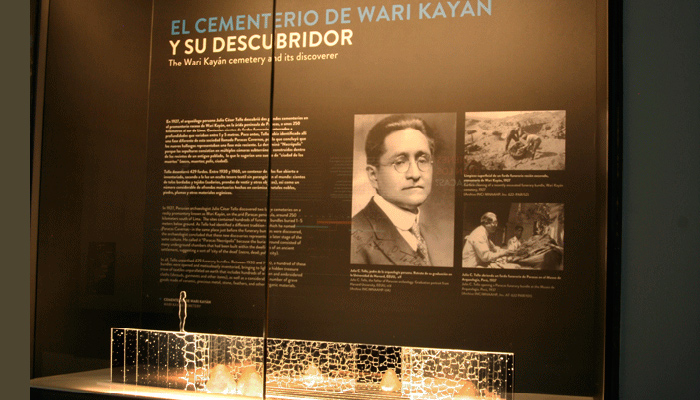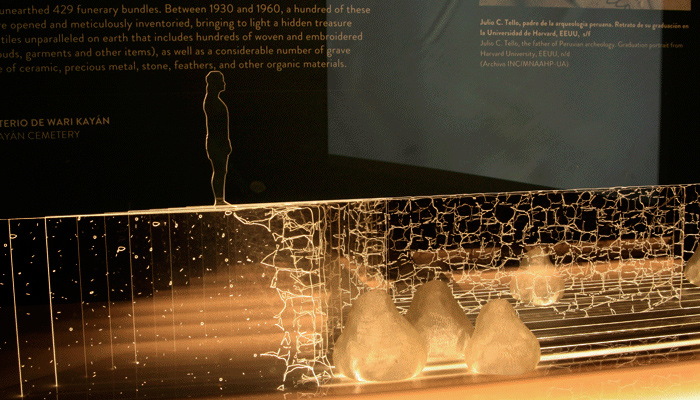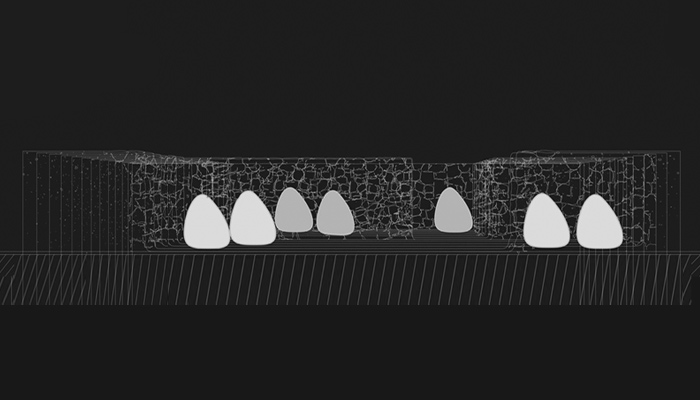Paracas Funerary Mantles: Offerings for Life – 2015
- Paracas funerary mantles: Offerings for Life
- Who Were The Paracas?
- The Wari Kayán Cemetery and Its discoverer
- What is a funerary bundle?
- Offerings for the Afterlife
- “Reading” the Images
- Severed heads, trophy heads
- Paracas textile art
- Three styles of embroidery
- A miniature outfit
- Headband: Turban I
- Headband: Turban II
- Headband: Turban III
- Turban-cloth: Two-headed serpents
- Skirt: Big-Eyed Being
- Uncu tunic with felines: Big-eyed Being
- Short poncho: Orcas
- Short poncho: Feline-Man
- Short poncho with fringes: Big-Eyed Being
- Attire of a Paracas chief
- Opening a funerary bundle from the Wari Kayán Necrópolis
- Mantles for the afterfile
- Bibliographic references
- Credits
The Wari Kayán Cemetery and Its discoverer
In 1927, Peruvian archaeologist Julio César Tello discovered two large cemeteries on a rocky promontory known as Wari Kayán, on the arid Paracas peninsula, around 250 kilometers south of Lima. The sites contained hundreds of funerary bundles buried 1–5 meters below ground. As Tello had identified a different tradition—which he named Paracas Cavernas—in the same place just before the funerary bundles were discovered, the archeologist concluded that these new discoveries represented a later stage of the same culture. He called it “Paracas Necrópolis” because the burial ground consisted of many underground chambers that had been built within the dwellings of an ancient settlement, suggesting a sort of “city of the dead” (necro, dead; polis, city).
In all, Tello unearthed 429 funerary bundles. Between 1930 and 1960, a hundred of these bundles were opened and meticulously inventoried, bringing to light a hidden treasure trove of textiles unparalleled on earth that includes hundreds of woven and embroidered cloths (shrouds, garments and other items), as well as a considerable number of grave goods made of ceramic, precious metal, stone, feathers, and other organic materials.




































